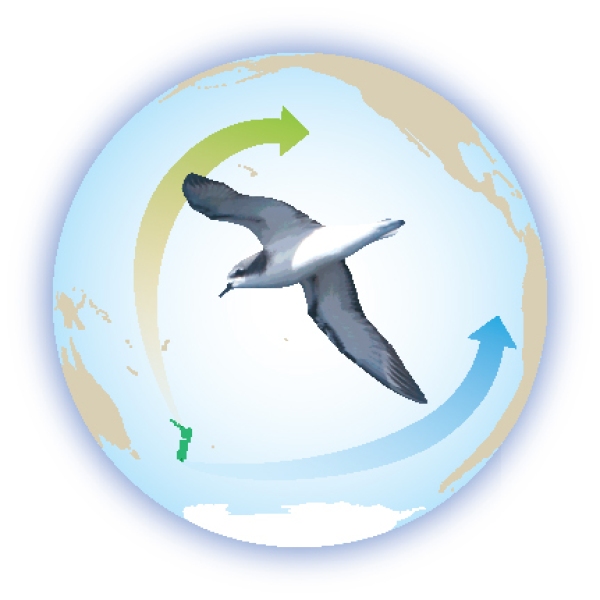They might be the same species, but two discrete populations of Cooks petrels – one from Little Barrier Island in the Hauraki Gulf, and the other more than 2000km away on Whenua Hou, or Codfish Island – keep their distance genetically.
What's more, they haven't interbred for centuries, says NIWA's Dr Matt Rayner, who tracked the two populations of small seabirds on their migratory flights across the Pacific.
"We found that birds from Little Barrier Island crossed the equator to the North Pacific, whereas those from Codfish Island stayed within the South Pacific, migrating to waters off South America".
The 200-gram birds could easily visit one another's colonies – they can fly a 1000km in a single day – but when Rayner and his team compared DNA from tissue samples, they found significant differences. Then, when they sampled old Cook's petrel skins, collected a century ago from the North Pacific and South Pacific migration destinations, they found precisely the same variations.
That confirms, says Rayner, also a University of Auckland research associate, that the two populations have been migrating to their respective regions for a long time.
"We found that migrating to different locations contributes to genetic differences between seabird populations, as it impacts populations' breeding timetables".
New lightweight tracking devices have only recently made it possible to track smaller seabirds on their epic flights. Rayner's team attached tiny geolocators – just two grams in weight – to the birds' legs. "They work just like a sextant," he says. "You get latitude from day length, and longitude from the timing of sunrise or sunset". The devices log information as they go, storing it for retrieval on the birds' return.
Many New Zealand seabird species fly thousands of kilometres between the northern and southern hemispheres each year, to take advantage of what Rayner calls an "endless summer", feeding and breeding in cool, productive waters.
The team now wants to investigate what implications climate change – or habitat damage from causes such as the Fukushima nuclear leaks – might have for the many millions of New Zealand seabirds that fly north each year.
This work was funded by the Ministry of Science and Innovation and the ASB Bank Community Trust.

